Bird Plumage Variations and Abnormalities

Variations in plumage can be based on the sex of the bird, its age, or seasonal changes caused by molting. Molting patterns are complex and even the experts do not have all the answers about how this process is controlled. This basic introduction to molting will provide you with a glimpse into the challenge and fun of studying molting patterns and the range of molting behaviors. Several plumage patterns can be observed in birds. The molting process can be either very obvious or difficult to detect, depending on the species and its plumage pattern.
Young birds
Young birds pass through one or more subadult plumages before reaching full adult plumage, referred to as the bird’s definitive plumage. The number of years required for a species to reach its definitive plumage varies widely. Many songbirds reach adult plumage after one year. Some gulls take as long as four years to reach adult plumage, and some eagles can take as long as five years to reach full adult plumage.

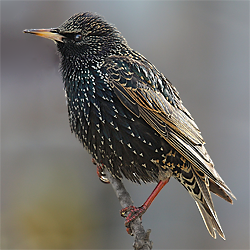
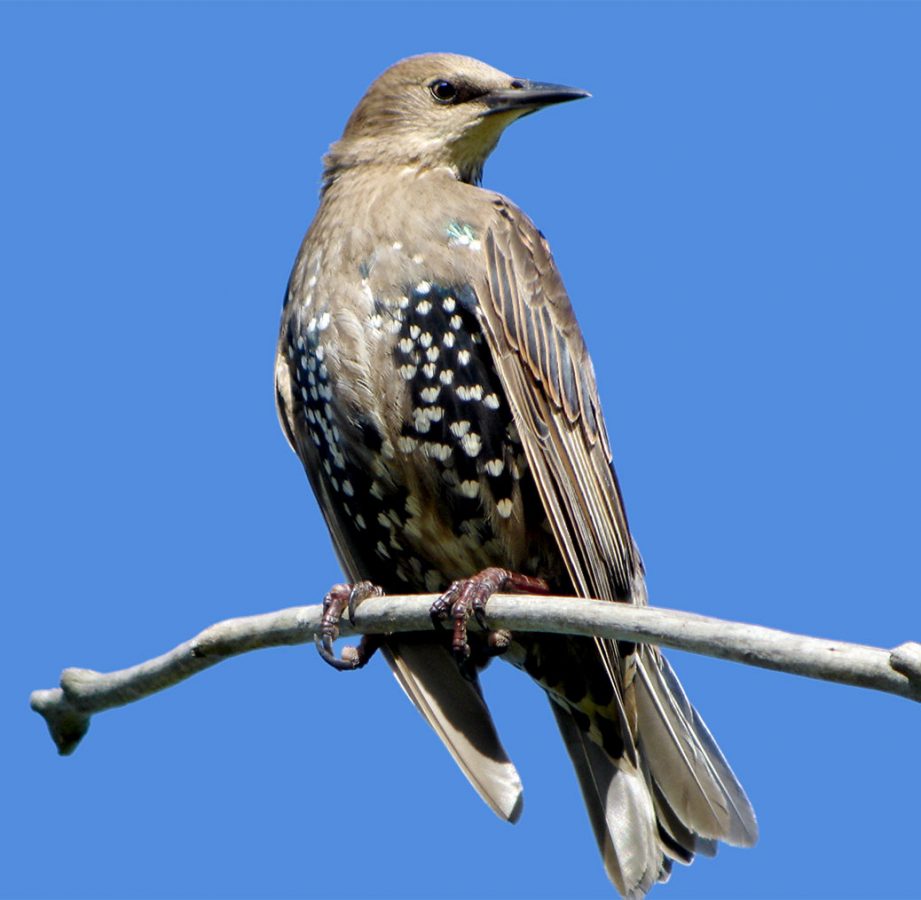
Adult birds
Single Plumage Pattern
In the simplest case, both male and female birds look alike and retain their definitive plumage throughout the year. Both the Blue Jay and Cedar Waxwing fall into this category. Birds with this plumage pattern do molt, but the new feathers have the same coloration and pattern as the previous plumage.

Seasonal Variation
Some adult birds (typically the males) sport a bright, colorful plumage in the spring, which is replaced by more subdued colors during the post-nesting molt. The widespread American Goldfinch provides a good example of this plumage pattern. In its basic winter plumage the male goldfinch is similar in appearance to the female.
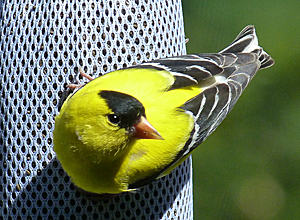

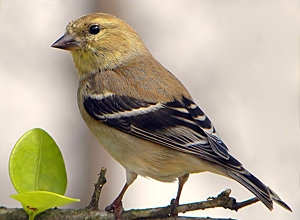
Sexual Dimorphism
Males and females of some species have such different plumages that it would be easy to think they were two different species. The Painted Bunting, shown below, is a case in point. In many species exhibiting strong sexual dimorphism, young males resemble the females until they are one or two years old.
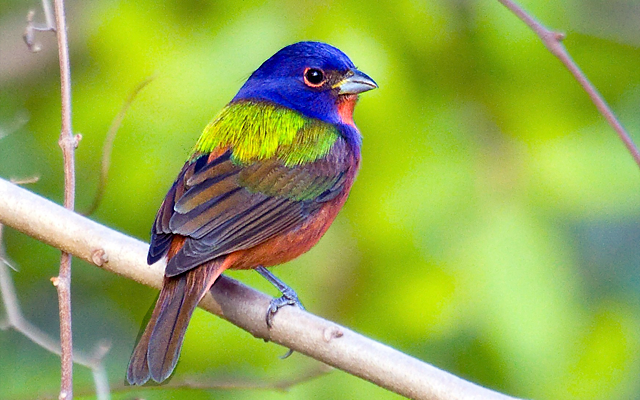
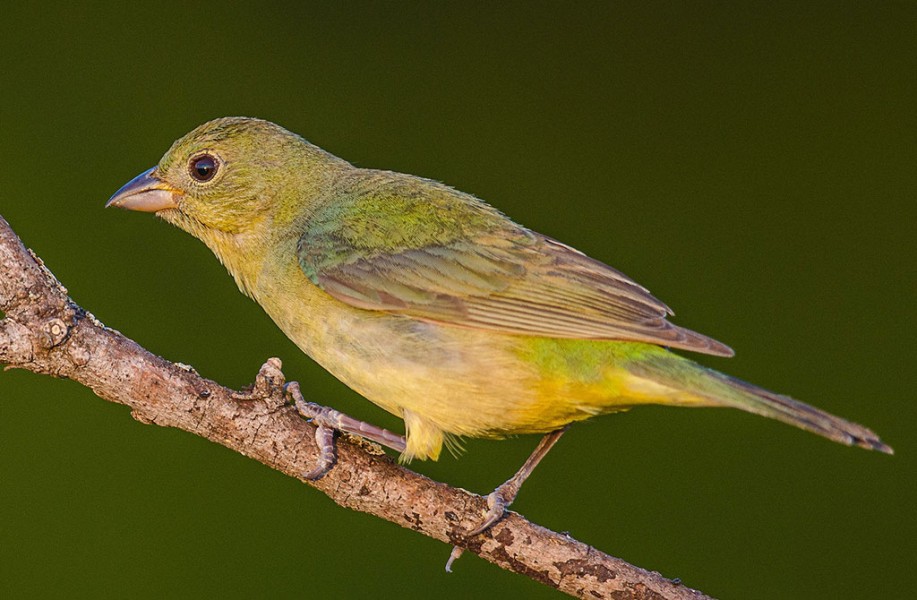
Color Abnormalities
On rare occasions you may observe a bird that has a familiar look to it—the right size and shape for a cardinal for example—but the color is not right. The absence or over-abundance of one or more pigments is the cause.
In rare cases, a bird does not produce melanin at a normal level or in a normal pattern. The resulting color patterns are referred to as being albino (white), leucistic (patches of pure white), or with dilute plumage. When birds produce too much melanin, they are referred to as melanistic. The unusual color patterns can be the result of injury, poor nutrition, or a genetic mutation.
Other factors can also affect a bird’s appearance. Feathers can become paler if bleached in the sun of the southwest, or become darker in areas with high air pollution. The berries they eat sometimes stain robins and waxwings.
True Albinism–Missing The Melanin
When birds are completely missing melanin pigment, they are called albinos. The white American Robin below is a clear example of a true albino.
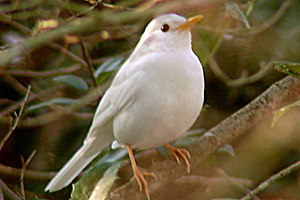
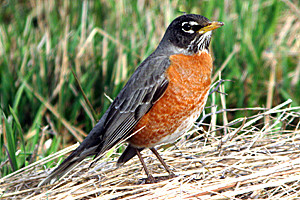
Dilute Plumage—Faded Colors
The normal American Robin pattern can be seen in this dilute-plumaged individual, but it is very faded compared to a normally colored bird.
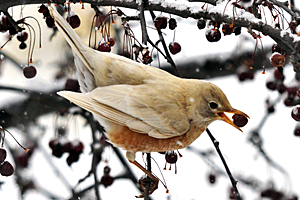
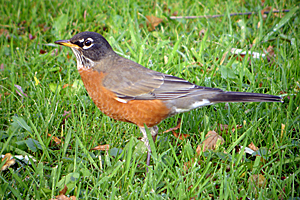
Pied, Leucistic, or “Partial albinism”—Areas of Pure White In Odd Spots
This first bird is a Black-capped Chickadee with some coloring problems. It still is producing some dark pigment in its bib, wings, tail, and a few feathers in its cap. But, it has pink feet and a light bill to go with the mostly white crown.
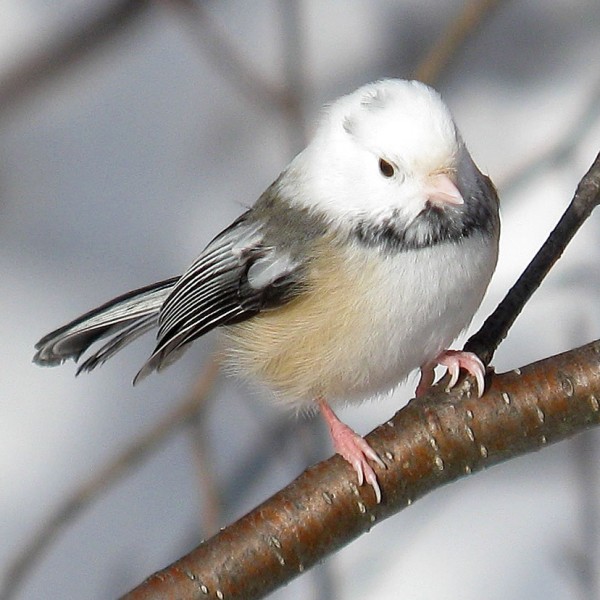
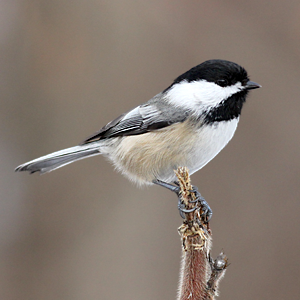
Melanism—Too Much Dark Pigment
Sometimes birds that are not normally black develop that way, and are called melanistic. This occurs when more than the normal amount of melanin is produced.
Melanism occurs when a mutation causes excess dark pigment to be produced in the feathers. This melanistic Black-capped Chickadee still has the silhouette characteristic of its species.

